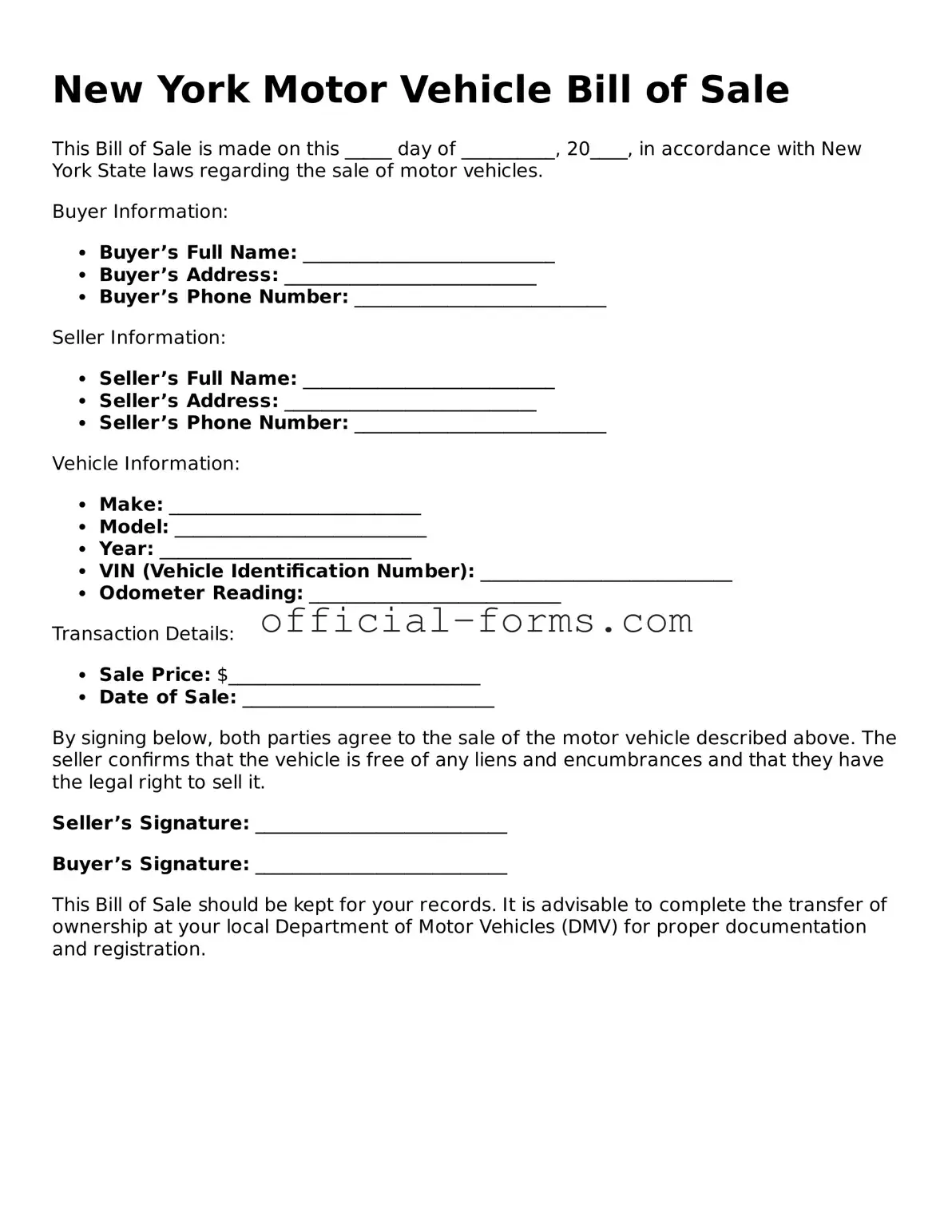When filling out the New York Motor Vehicle Bill of Sale form, many people make common mistakes that can lead to issues down the line. One frequent error is failing to include all necessary information. Both the buyer's and seller's details must be complete, including full names, addresses, and contact information. Omitting any of this information can create confusion and delay the transfer of ownership.
Another mistake is not accurately recording the vehicle's details. The make, model, year, and Vehicle Identification Number (VIN) should be precise. Errors in these details can cause problems when registering the vehicle or in future transactions. Always double-check the information before submitting the form.
People often overlook the importance of signatures. Both the buyer and seller must sign the form for it to be valid. If one party forgets to sign, it can invalidate the entire transaction. Make sure that both signatures are present and that the date is included as well.
Some individuals may also neglect to indicate the sale price clearly. The sale price should be written clearly in both numbers and words. If there is any ambiguity, it could lead to misunderstandings or disputes later on. A clear sale price helps protect both parties.
Another common issue is not providing a copy of the Bill of Sale to the buyer. After completing the form, the seller should give a copy to the buyer for their records. This document serves as proof of the transaction and can be essential for future reference.
Lastly, people sometimes forget to check for any additional requirements specific to their situation. For example, if there are liens on the vehicle, this must be disclosed. Failing to address such details can result in legal complications. Always review the form and any associated regulations to ensure everything is in order.
